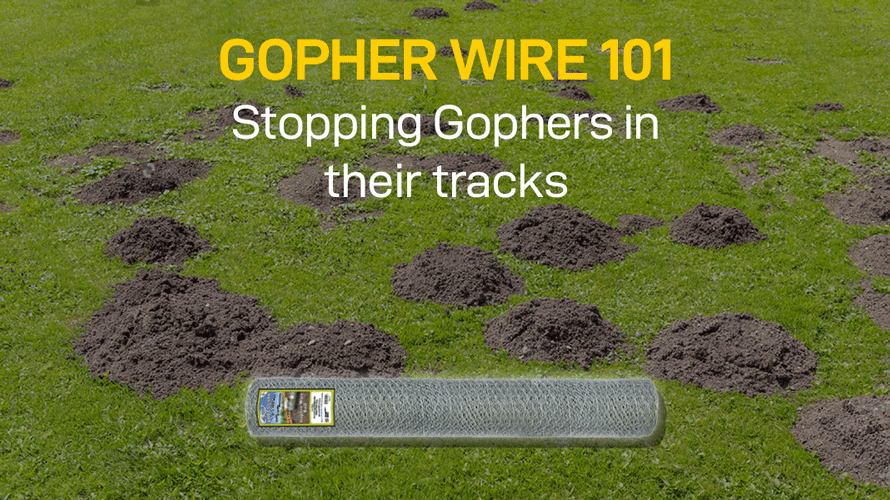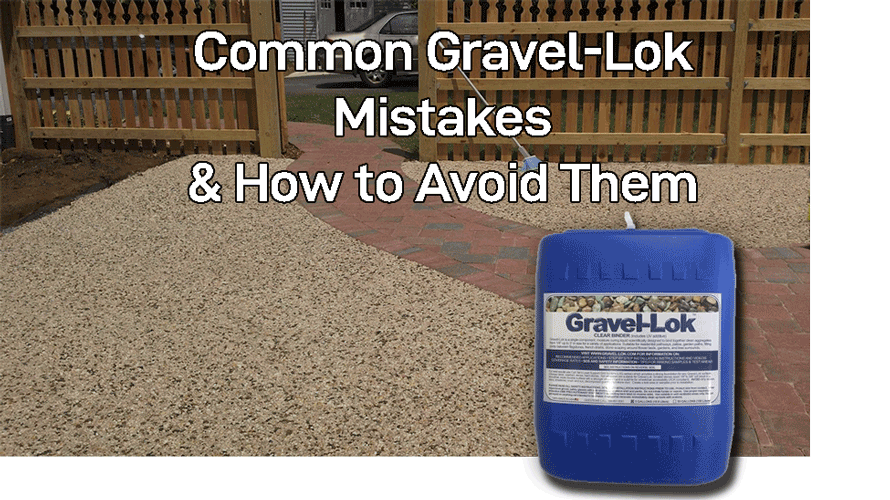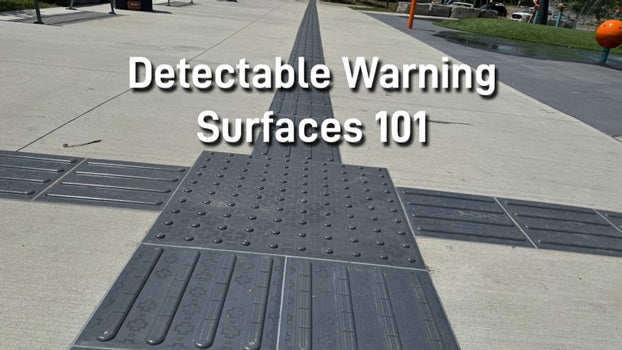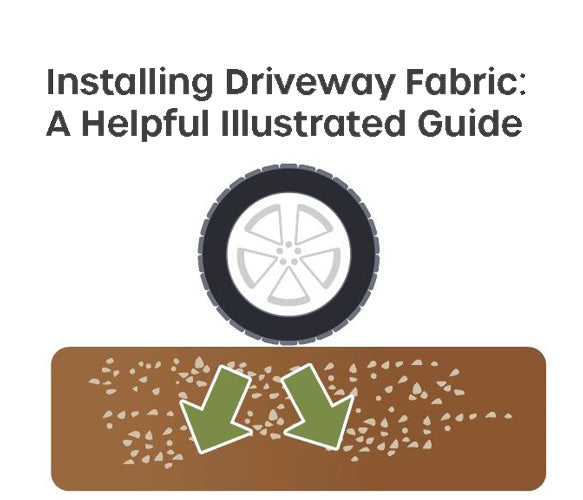How Do Detectable Warning Surfaces Work?

detectable warning surfacing. directional wayfinder tiles at a public splash park
Society tries to do everything it can to keep citizens protected when it comes to pedestrian safety. One more recent example of this is implementing detectable warning surfaces on sidewalks and other places. In the past few decades they have been installed in cities all around the US to help people stop themselves from walking into dangerous traffic, or transition zones when they can't see where they are going, but how do they work?
Detectable warning surfaces help people with visual impairment to know where pedestrian transitions are. They are required by the ADA Americans with Disabilities Act and are placed near intersections and on transit platforms to alert passersby. These ground mats have noticeable contrasting colors and raised domes for multi-sensory feedback.
These are also helpful for people who are distracted while walking with electronic devices. Overall, detectable surfacing also known as Truncated Domes are an excellent solution to keeping pedestrians safe. This article will be going over everything you need to know about detectable warning surfaces including installation and why they have been increasingly a greater priority in cities. Keep reading to learn more.
What Are Detectable Warning Surfaces?
Detectable warning surfaces are required by the Americans with Disabilities Act (ADA). They are small, elevated, color-contrasting strips of bands on pedestrian ramps placed at transition points in which there is a crosswalk, road crossing, or dramatic change in elevation like an escalator, or platform drop off.
As visually impaired and blind pedestrians walk on the road, the detectable warning surfaces are meant to alert some change in surroundings and surface states. This will help when they are felt underfoot or heard when a walking cane moves over the bumps.

Red detectable warning mat on street
How did detectable warning surfaces begin? If you live in a fairly dense city, there is a good chance you've been seeing them installed over the years. Not everyone knows exactly what they are and what they are for, but they are easily noticeable by their purposefully contrasting colors and bumpy surface.
Lighthouse Guild also has a page on this subject, so if you would like even more insight, you can visit the page after this. They are very helpful and inspired the next sections, in fact.
History
These surfaces were originally designed by inventor Seiichi Miyake in Japan during the 1960's to help the dense population better navigate busy streets and railway areas. They quickly took off in popularity and spread throughout Japan.
In 1990 the US first encountered detectable surfacing when they were adopted with the Americans with Disabilities Act, which is a division that protects the rights of people with disabilities and seeks fair treatment.
Brief History of the ADA and Warning Surfaces
In 1990, President George H.W Bush signed the ADA into the law, designed to provide fair treatment and opportunities for millions of Americans with disabilities. As a result, changes need to be made, and one of these changes was rethinking our city streets.
One of these changes was installing curb cuts that could be easily detectable by the visually impaired.
For a good mental picture of what these look like, they were dark on light colors (for example, a red strip for a bright sidewalk) and light on dark, designed to be easily seen by people who weren't entirely visually impaired, but may have trouble detecting colors, or colors that are subtly contrasting with one another.
In 2010, the ADA Standards for Accessible Design had expanded on previous standards by establishing minimum and max dimensions for dome size and spacing.
Prior standards required that the little domes have a diameter of 0.9 in and a center-to-center spacing of 2.35 in. However, a newer design called for a base diameter between 0.9 inches and 1.4 inches with spacing between 1.6 inches and 2.4 inches. The height of the domes remained the same at 0.2 inches.
Essentially, this provided a consistent pattern - you knew what you were stepping on feeling, which is very important for something designed to keep people safe. Think of it as a traffic light. Imagine if one street had a red light indicating to stop, while the next had a blue light indicating the same thing. That's essentially what the new design was trying to prevent.
Furthermore, the curb cuts are required to be least 3 ft wide, and they should be a 24-inch strip of easily detectable warnings installed across the bottoms of curb ramps slope of 8.33% as its maximum.
This was not the most significant change, however. In 2001, the ADA guidelines had required detectable warning signs to be installed on curb ramps, at dangerous vehicular areas, in front of doors to potentially hazardous areas, and on transit platforms. Furthermore, They were also installed on the edges of reflecting pools.

Detectable Warning Mat Guidelines
The 2010 revised standards were to improve the overall design and standards of these warning signs and only require them to be installed on public right-of-way areas, transit platform edges, and curb ramps.
How Important Are Detectable Warning Surfaces?
While there are no reliable, current stats concerning using canes or dog guides, the Guiding Eyes for the Blind estimated 10,000 direct dog teams were operating in the USA last year. They also cited that about 2% of blind and visually impaired people function with dogs on their official site. The World Health Organization estimated in October 2018 that 1.3 billion people around the globe live with some kind of vision impairment and 36 million people of the number are blind.
Additionally, according to the US Census Bureau, nearly 40 million listed Americans had a handicap in 2015. The National Federation of the Blind stated that, of the 40 million, about 7.3 million individuals (age 16 and older) had reported substantial vision loss.
Approximately 387,900 individuals in New York reported having a visual handicap in 2015, according to the 2015 American Community Survey results, which were interpreted by Cornell University's Employment and Disability Institute.
We don't have statistics indicating how many people have been saved by detectable warning signs, but these stats should paint a better picture of how many people they have helped. It only takes one wrong move/decision for tragedy to strike, and so the probability that these have done their job is extremely high.
Understanding the Visually Impaired and Why Warning Surfaces Are So Effective
Visually impaired persons (VIP) know the layout and memorize where things are when they are in familiar areas. Learning how to travel in unfamiliar or different places is done using mobility and orientation (O&M) abilities, which is why warning surfaces are essential.
Because the visually impaired are so reliant on orienting themselves through exploring their surroundings, it is challenging for them to know when they have crossed a boundary that isn't so obvious.

visually impaired man using cane to detect where crosswalk markers are
"Warning surfaces are highly effective because they provide an exact, reliable way for people to tell where they are by touch and visual contrast."
Also, many walkways do not have an obvious curb to tell someone that they are exiting the safe boundary, which is why the ADA is so adamant about installing them in these areas, such as slopes that lead into the street.
Warning surfaces are highly effective because they provide an exact, reliable way for people to tell where they are by touch and visual contrast. The reason why these warning surfaces need to contrast with their surroundings is that there are varying degrees in visual impairment, people use the term "blind" loosely, but that can mean anywhere from being able to loosely see your surroundings to total blindness where you can't see anything at all - not even light.
Regardless of the degree of visual impairment, warning surfaces are essential for all, even for people who have 20/20 vision, because, as we stated earlier in the article, distractions from mobile devices is a real issue. Everyone can benefit from warning surfaces.
What’s the Difference Between Cast in Place and Surface Applied Detectable Warning Surfaces?

Armor Tile Cast In Place
warning cat Installation
Cast-in-Place Tiles
Cast-in-place ADA tiles are intended for new building concrete surfaces; thus, if you pour new concrete on a project where an ADA truncated dome warning system is necessary, a cast-in-place tile is the ideal option for your job. These tiles are suitable for installing in concrete, when it is wet, providing long-term durability and stability even under heavy traffic or severe weather conditions.
In cases where you are especially concerned about replacing your ADA tiles in the future, cast-in-place replaceable tiles have a simple replacement process built into the tile. Replaceable tiles apply a straightforward bolt system that locks the tile set up within the concrete coating.
The bolts can be easily accessed and removed to simply lift the tile off and bolt in a new tile, which will leave the concrete surface intact to save time and money.
Surface Applied Tiles
While cast-in-place tiles are great for new construction projects, both new and present properties fall under the Americans' requirements with Disabilities Act. Thus, ADA tiles are often needed in existing areas where replacing concrete is not feasible, necessary, or economical.
Surface-applied ADA cautioning tiles are meant to use existing concrete in areas that need truncated dome tiles to ensure compliance with ADA regulations.
These tiles are somewhat thinner than cast-in-place tiles also may be installed in approximately 10-15 minutes for a quick, easy, and efficient means to retrofit parking lots, sidewalks, etc.
To put in surface-applied tiles, a mixture of glue and fasteners is utilized to ensure the tile is mounted correctly on the floor and protect against tile slippage or separation from the surrounding region for safety and effectiveness.

Adhesive applied to bottom of Surface Applied warning mat
Surface-applied tiles can be substituted as required by levering or dividing the damaged tile, cleaning the area, and installing a brand new tile in its location. When purchasing ADA dome tiles, making the right decision signifies enjoying an easy installation and getting the durability and performance from your purchase that you expect.
Installation Guide
One method that requires the least labor involves installing them directly in wet set concrete. This is also considered a greener option and is more straightforward overall.
Accessible provides clear cut instructions on how to install detectable warning systems using this method:
Cast In Place Installation Guide
- "Maintaining a 4–7 slump range, pour and float the concrete."
- "Without removing any concrete, place the tile on the curb ramp 6″ - 8″ (10.16 - 20.32 cm) from the curb line (face of curb)."
- "Tamp the tile in a grid pattern across the top face, embedding the tile into the concrete using a non-marring rubber mallet."
- "Create a 1/4″ (0.64 cm) concrete free edge around the perimeter of the tile using a 3/8″ (0.95 cm) radius edging tool then float the concrete around the tile's perimeter using a steel trowel."
- "Apply a broom-finish to the curb ramp."
- "After the concrete has substantially cured, remove the protective plastic wrap by cutting the plastic with a sharp knife tight to the concrete/tile interface."
Use Cast in Place is for new concrete pour applications, &
Surface Applied for a retrofit over existing surfacing
Surface Applied Installation Guide
- "Place the tile on the designated location and trace the perimeter with a thin permanent marker."
- "Set the tile aside and, using a 4″ (10.16 cm) diamond cup grinder, scour the concrete within the marked location and correspond with the area requiring adhesive as indicated in the backside of the tile."
- "Clear away the dust with a leaf blower, then clean the back of the tile and the concrete with a rag soaked in acetone."
- "Apply the surface applied adhesive to the back of the tile (as indicated on the tile). The first bead should be applied thin, ½" (1.27 cm) from the perimeter edge and a second thicker bead applied 1″ (2.54 cm) inside of the first."
- "Set the tile true and square to the curb ramp and press down firmly."
- "While stepping down on either side of the preformed hole, drill down 3″ (7.62 cm) into the concrete slab using a hammer drill and the recommended ¼" (0.64 cm) diameter carbide drill bit."
- "While still applying pressure, remove the dust and any adhesive surfaces and carefully set the supplied color-matched Axius® Fasteners with a plastic-tipped hammer. Repeat steps 6 & 7 while working across the tile from one end until all preformed fastener locations are completed."
- "Clean the perimeter of the tile and the immediately surrounding concrete with acetone making sure to remove any adhesive that has escaped from beneath the tile. Apply and smooth sealant around the perimeter of the tile."
The first installation method is known as cast-in-place installation, while the latter is known as surface-applied installation. What's the difference? And which one is "better"?
The cast-in-place method is more straightforward forward as we mentioned above. It involves laying down wet concrete and essentially "baking" the warning surface into the ground.
On the other hand, the surface applied method involves using a strong adhesive to attach the warning surface to the ground and finishing it off by physically drilling it into place.
You likely want to know more about both methods, so without further ado, let's get into it! And if you want to learn more, head on over to Armor-tile's website where they elaborate more.
Should You Install a Warning Surface in Front of Your Business?
If you own a business, you might be wondering if it is worth installing a warning surface near your shop, even if you aren't required to. We'd say YES, truncated domes and detectable warning systems are worth a consideration as they help increase safety for store patrons.
Accessibility isn't something as many people think about when it comes to developing a successful brick and mortar business, but it makes a big difference in people's lives who need it. Even if you just own a coffee shop, you will eventually make someone's day in a subtle way.

Conclusion
Detectable warning surfaces are very important not only for the people who they were designed for, but for all of us. They help those with visual impairment lead a more independent life and at the same time help distracted pedestrians from tripping, or walking into oncoming traffic.
Sources:
Detectable Warning Mat Options:
Go here to see our full offering of detectable warning mat products >
Resources:

Ryan Matheson
Product Director
Ryan is member of the Mainline product team and as a former landscape contractor lends his expertise to the Mainline blog. Ryan can be reached by emailing Support@ mainlinematerials.com
related posts
How Do Detectable Warning Surfaces Work?
Detectable warning surfaces help people with visual impairment to know where pedestrian transitions are. Required by the ADA Americans with Disabilities Act they are placed near intersections and on transit platforms. These ground mats have noticeable contrasting colors and raised domes for multi-sensory feedback.
Installing Driveway Fabric: A Helpful Illustrated Guide
Driveway fabric works by providing a separation layer between the driveway gravel and the earth below. Due to its high tensile strength, the fabric acts as a stabilizing layer and reduces the amount of rock required by up to 30% which results in a reduction of labor and overall cost.





